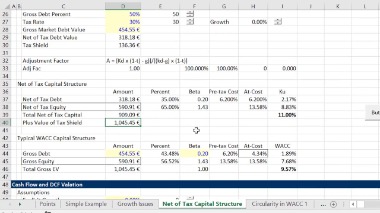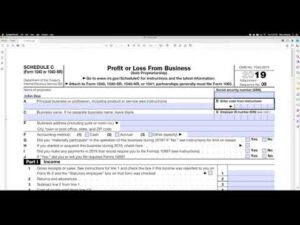
Once connected, all bills in QuickBooks Online will sync in real-time with Wise. Bill payments are automatically synced, matched, and categorized in QuickBooks. Having how to read financial report notes for pension and retirement benefits up-to-date and accurate accounts is important for any business. If you want to reconcile in QuickBooks Desktop, this guide provides a detailed, step-by-step approach to help you through this process. In cases where an opening balance wasn’t entered previously, QuickBooks Online provides the option to add it retrospectively.
Common causes of these discrepancies include missed transactions that are in the bank statement but not in QuickBooks, duplicate transactions recorded more than once, and incorrect transaction amounts. To resolve these issues, add any transactions that are missing in QuickBooks, delete or merge any duplicate entries, and correct the amounts for transactions that have been inaccurately recorded. If you reconciled a transaction by mistake, here’s how to unreconcile it. If you adjusted a reconciliation by mistake or need to start over, reach out to your accountant. Through careful adjustments and verifications, the reconciliation process aims to provide a clear understanding of a company’s financial position.

Enter the Ending Balance
Should you encounter complex issues, don’t hesitate to seek guidance from QuickBooks resources or consult with accounting professionals. When you’re done reviewing your statement, you’ll know everything made it into QuickBooks. It aids in identifying any potential errors or fraudulent activities, thereby contributing to the overall financial integrity of the organization. Utilizing the various tools within the reconcile window, such as filters and search functions, further streamlines the process for a comprehensive reconciliation. It also affects the beginning balance of your next reconciliation. It can also help with account audits and tax preparation by catching errors early.
Wise Business Account Limits US Guide
Utilize the Items you’ve marked cleared section to compare the summary totals with those on your bank statement. If you need to edit or get more details on a transaction, select it for further action. To modify any information entered in the previous step, use the Modify option. Finally, after identifying and resolving these discrepancies, adjustments are made to the financial statements to reflect the reconciled balance, ensuring accuracy and consistency in the financial records. The next step is to identify any discrepancies between these two sets of records, which could be due to errors, omitted entries, or timing differences in recognizing transactions. Once these discrepancies are identified, they need to be thoroughly investigated.
Recording all transactions in QuickBooks Online
For any discrepancies, like a slight mismatch in payee details, simply edit the transaction in QuickBooks Online to align it with your bank statement. The goal is to have a zero difference between your statement and QuickBooks Online by the end of the process, at which point you can select Finish now. Linking your bank and credit card accounts to online banking allows for the automatic downloading of transactions and entry of the opening balance into QuickBooks Online. It’s recommended to reconcile your checking, savings, and credit card accounts every month. Once you get your bank statements, compare the list of transactions with what you entered into QuickBooks.
- Once these discrepancies are identified, they need to be thoroughly investigated.
- If you want to reconcile in QuickBooks Desktop, this guide provides a detailed, step-by-step approach to help you through this process.
- This essential tool can be accessed by navigating to the ‘Accounting’ menu, followed by ‘Reconcile.’ Once in the reconcile module, users can select the appropriate account and statement date for reconciliation.
- Reconciling previous months in QuickBooks Online involves the process of retroactively matching the financial records with the bank statements for specific past periods to ensure comprehensive financial accuracy.
- Then, you’ll need to enter the ending balance from your bank statement and the ending date.
Resolving QuickBooks bank statements discrepancies
When handling discrepancies between QuickBooks and your bank statements, start by comparing each transaction in QuickBooks against the bank statements to spot any differences. Once the matching is complete, and the difference between your bank statement and QuickBooks Desktop shows $0.00, proceed to finalize the what is financial accounting reconciliation by selecting Reconcile now. After completing the reconciliation, you have the option to display or print the Reconciliation report for record-keeping. Make sure you enter all transactions for the bank statement period you plan to reconcile. If there are transactions that haven’t cleared your bank yet and aren’t on your statement, wait to enter them.
The opening balance should match your bank account balance period in question. To carry out a reconciliation, you will need to have your monthly bank or credit card statements on hand. To correct transactions that have already been reconciled, locate the transaction in question and remove the reconciliation marker, such as a checkmark, to un-reconcile it. Then, make the necessary changes to ensure the transaction details accurately reflect the actual transaction.
This not only helps in maintaining accurate financial records but also serves as a crucial reconciliation step to ensure that the company’s books reflect the true financial position. This process involves comparing the transactions entered into QuickBooks Online with the bank statement to pinpoint any inconsistencies. By meticulously reviewing each transaction, users can detect auditors responsibility for assessing a clients internal controls potential errors such as duplicates, missing entries, or incorrect categorizations.
For instance, if a check issued by the company has not been cashed, it would show up in the company’s records but not on the bank statement. This process plays a crucial role in ensuring that the recorded transactions align with the actual activity in the bank account. By marking transactions as cleared, it becomes easier to track which ones have been verified by the bank, minimizing the risk of overlooking any discrepancies.

